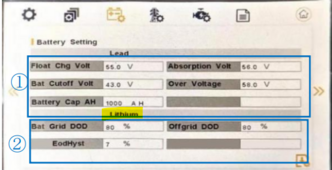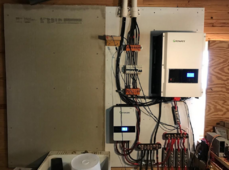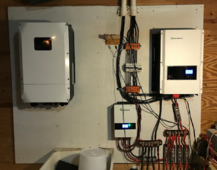Did a little more last night. Couple of things.
Good news first -
I had the inverter in Self Consumption before I left for work yesterday, but I left it set so that the battery would not be used. I was under the impression that any solar that came in would charge the battery, but instead I was pleasantly surprised to see that the solar that came in directed offset the loads on the grid input, utilizing the CT's to prevent back-feeding. In other words, it behaved like a grid tie inverter with limiter - passing solar to loads without allowing back-feed.
Not as good of news -
Last night, I set up time of use, just an entry for the whole day, setting it so that the battery should only go down to 52.5 volts, and not discharge from the battery after that. I had the main setting in Self Consumption, allowing for battery discharge, supporting loads on my subpanel, up to the point of feedback past the CT's. The inverter did not honor the battery voltage but continued to discharge past the set point. Would guess you need battery comms for that to work. I have no doubt that the main voltage cutoff for the batteries would have prevented total drain.
So without battery comms, the inverter works, but you don't have the fine control over voltages and/or battery SOC that we really want. Inverter will work in some use cases, so in my opinion - for my needs, still worth it. Don't regret spending the money on this. However, I do want battery comms and control over the fine grained behavior of the inverter. I'll be getting that going soon.
Impression of the software is that it works, but it is a little hinky in places - or its just that I don't truly understand the intent of some of the settings. The manual is OK, but desperately needs explanation of what some of the settings are trying to do, not the repeating facts that are obvious.





